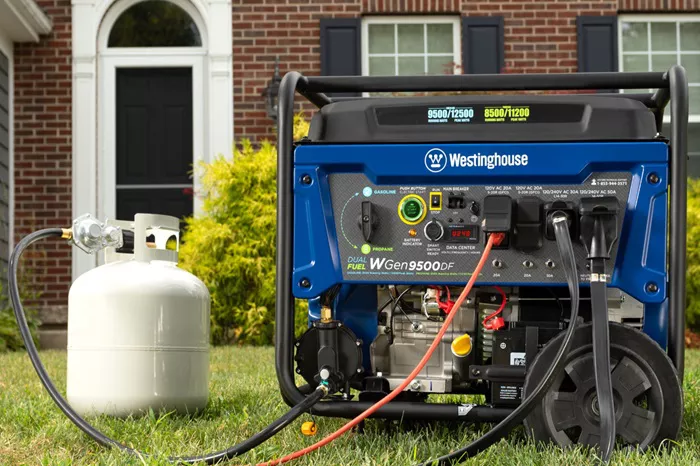Generating your own electricity at home can be a rewarding project, whether for emergency backup power or to reduce reliance on the grid. Building an electric generator requires a good understanding of electrical principles, mechanical systems, and safety precautions. This guide will walk you through the process step by step, covering different types of generators, necessary components, and assembly instructions.
Understanding How Electric Generators Work
An electric generator converts mechanical energy into electrical energy using electromagnetic induction. When a conductor (like a copper wire) moves through a magnetic field, it generates an electric current. Most generators consist of:
Rotor (Armature): The rotating part that creates a changing magnetic field.
Stator: The stationary part with coils where electricity is induced.
Prime Mover: The mechanical force (engine, turbine, or hand crank) that turns the rotor.
Generators can produce AC (Alternating Current) or DC (Direct Current), depending on their design. Home power systems typically use AC because most appliances run on it.
Types of Generators for Home Use
Gasoline or Diesel Generators
These are the most common backup generators. They use an internal combustion engine to spin an alternator, producing electricity.
Pros:
- High power output (enough for a full house).
- Easy to find and maintain.
Cons:
- Requires fuel storage.
- Noisy and produces emissions.
Solar-Powered Generators
These use solar panels to charge batteries, which then power an inverter to produce AC electricity.
Pros:
- Clean and renewable energy.
- Low maintenance.
Cons:
- Depends on sunlight availability.
- High initial cost.
Wind Turbine Generators
Wind spins a turbine, which turns a generator to produce electricity.
Pros:
- Works well in windy areas.
- Sustainable energy source.
Cons:
- Requires consistent wind.
- Large installation space needed.
Hand-Crank or Pedal-Powered Generators
These are small-scale generators operated manually.
Pros:
- No fuel needed.
- Useful for emergencies.
Cons:
- Low power output.
- Labor-intensive.
Building a Simple DIY Electric Generator
For this guide, we’ll focus on constructing a small-scale AC generator using a permanent magnet DC motor (as a generator) and a mechanical power source (like a bicycle or hand crank).
Materials Needed:
- A permanent magnet DC motor (12V or 24V).
- A mechanical power source (bicycle, hand crank, or small engine).
- Pulleys and belts (to connect motor to power source).
- Bridge rectifier (if converting AC to DC).
- Voltage regulator (to stabilize output).
- Deep-cycle battery (for energy storage).
- Power inverter (to convert DC to AC for home use).
- Wires, switches, and fuses (for safety).
Step-by-Step Assembly:
Choose and Mount the Motor
A brushed DC motor can act as a generator when spun. Mount it securely on a base near your power source (e.g., bicycle stand).
Connect the Mechanical Power Source
Use a belt and pulley system to link the motor to the crank or bicycle wheel. Ensure smooth rotation for efficient power generation.
Test Voltage Output
Spin the motor and measure the voltage with a multimeter. A 12V motor should produce around 12-24V when spun fast enough.
Add a Rectifier (If Needed)
If using an AC motor, attach a bridge rectifier to convert AC to DC.
Connect to a Battery
Store generated power in a deep-cycle battery to ensure stable supply. Use a charge controller to prevent overcharging.
Install an Inverter
A power inverter converts stored DC power into 120V/240V AC for home appliances.
Wire to Your Home (Optional)
For a full home backup system, connect the inverter to a transfer switch to safely switch between grid and generator power.
Safety Considerations
- Use proper insulation to prevent electric shocks.
- Install fuses or circuit breakers to avoid overloads.
- Keep generators in ventilated areas (if using fuel-based systems).
- Follow local electrical codes if connecting to home wiring.
Maintaining Your Generator
- Check connections regularly for corrosion.
- Lubricate moving parts to reduce wear.
- Test the system monthly to ensure reliability.
Conclusion
Building an electric generator for home use is achievable with the right components and knowledge. Whether you opt for a fuel-based, solar, or manual generator, understanding the basics of electricity and mechanics is key. Start small, prioritize safety, and gradually scale up your system for greater power output.
By generating your own electricity, you gain energy independence and reduce your carbon footprint—making this a valuable skill for any homeowner. Would you like recommendations for specific generator kits or advanced modifications? Let us know in the comments!

